
Conversational experiences and customer outcomes: How Typeform creates blueprints for customer success
Built to help brands connect with their customers in more meaningful ways, Typeform is an interactive survey platform with a vision to create a world of more personal business relationships. Focused on realizing that vision by empowering and supporting their customers is Christine Werner, Typeform’s Senior Director of Customer Success.
This is the fifth in a recurring series of articles looking at how modern support leaders are navigating the support landscape as it continues to evolve. With customer expectations on the rise, we look to find out how support leaders at companies like Slack, Zapier, and Aircall are creating best-in-class experiences to meet those expectations, and what support teams need to be set up for success as the future unfolds.
Here at Intercom, our mission is to make internet business personal – something the team at Typeform shares in their thinking, with a mission of inspiring brands to have meaningful customer relationships at scale. “Through speaking with our customers, we realized that Typeform is more than a survey tool – it’s a conversational experience platform. When using Typeform, our brands’ own customers feel very connected to that brand, which is so important. You have to feel that connection, that trust in the brand, and to know that it’s relational. It’s beyond that surface interaction,” Christine says.
The mission of support and success
In defining the goals of support and success teams, Christine notes that it’s very important to ask yourself one question – how can we fulfill the company’s overarching vision? “At Typeform, our vision in customer success itself is to empower our customers by creating very thoughtful and seamless experiences that then empower them to have those meaningful relationships with their own customers,” she says.
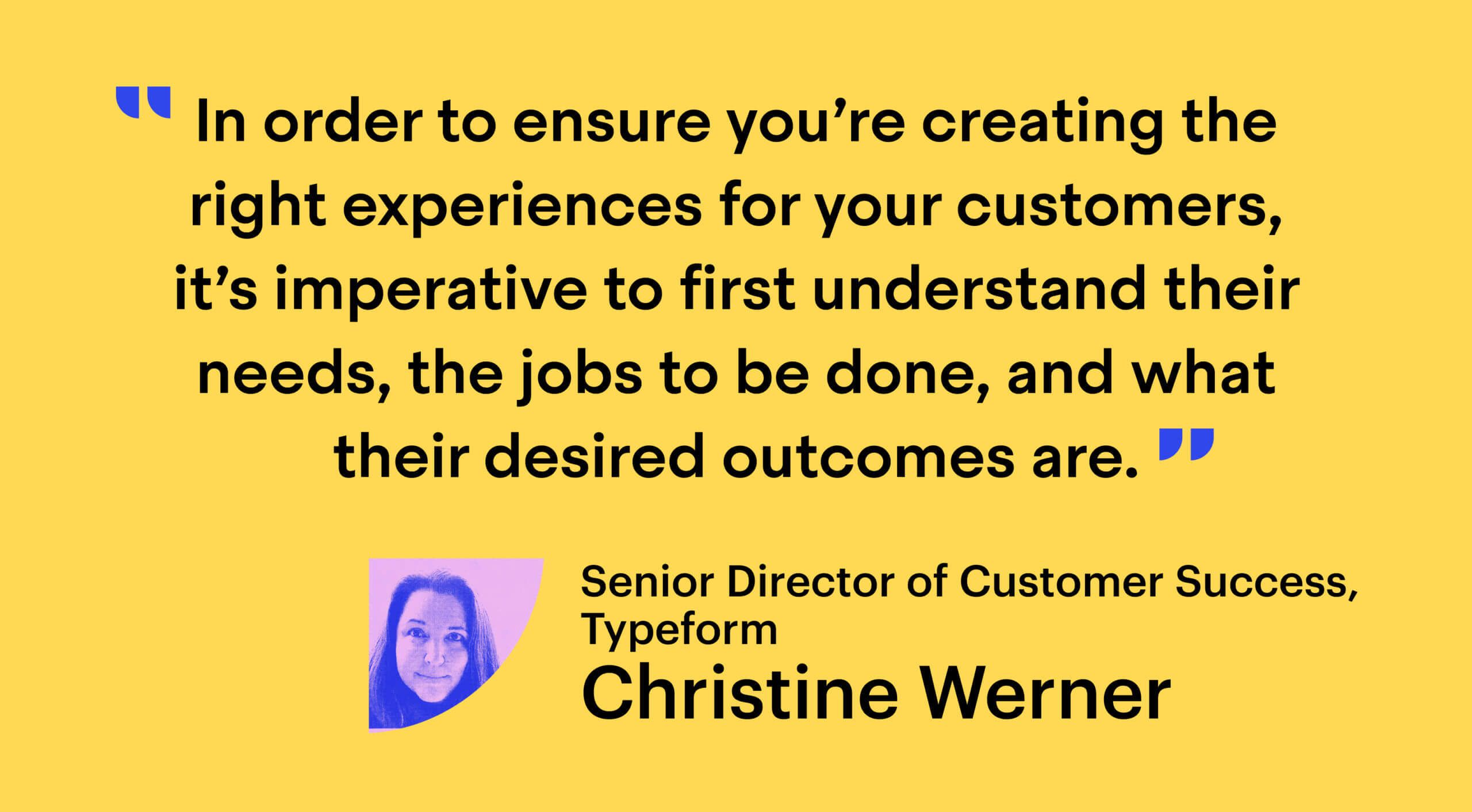
When it comes to creating these experiences, Christine explains that Typeform structures customer support in three pillars: proactively supporting their customers, empowering them to self-serve, and being there to provide human-assisted support when it’s needed – similar to the way we approach customer support here at Intercom through the lens of the Conversational Support Funnel.
Across all three pillars, Christine says, “In order to ensure you’re creating the right experiences for your customers, it’s imperative to first understand their needs, the jobs to be done, and what their desired outcomes are.” And to do this, you need to start at the source – the customers themselves.
The power of conversations
Across the company, Christine points to a number of teams responsible for learning about and deeply understanding their customers, from product to customer success to user research. Above all else, Typeform is focused on ensuring that the experiences they’re delivering meet the needs of their customers. With customer needs constantly evolving, they place a great deal of importance on having regular one-to-one conversations with their customers and inviting them to join beta groups to collect and internalize feedback, helping them adapt to meet those changing needs.
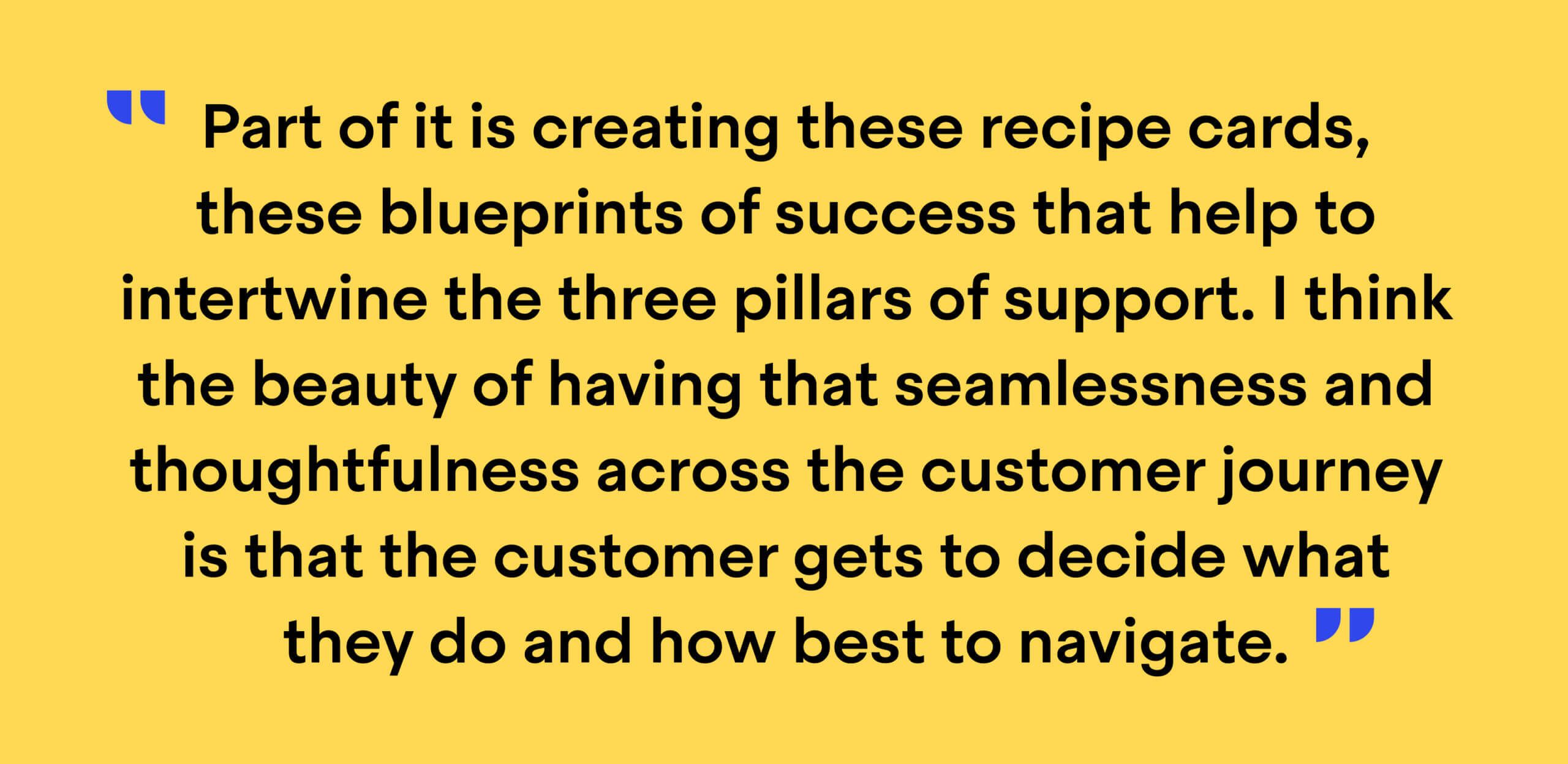
These valuable insights help the team to create blueprints, Christine explains, to map out their support strategies across their proactive, self-service, and human support offerings, saying:
“Part of it is creating these recipe cards, these blueprints of success that help to intertwine the three pillars of support. Some customers navigate all three – from proactively consuming information in-product or through email, they might dip in and out of the help center, and down the road, they might need support because now they’ve layered in a more complex feature. I think the beauty of having that seamlessness and thoughtfulness across the customer journey is that the customer gets to decide what they do and how best to navigate.”
A holistic approach to support
Within the customer success organization at Typeform, there are teams dedicated to serving customers across all three pillars of their support. “We have a support team, as well as self-serve conversational teams, and a very proactive engagement team,” Christine explains.
Using Zendesk and a suite of integrated tools, these teams work cohesively to build bridges between each of the support pillars, ensuring their customers have a seamless experience when interacting with the team, and that they can avail of the type of support that they need – precisely when they need it.
Data-informed support
A large component of Typeform’s customer support is to proactively get ahead of known issues and provide help to customers before they need it. To do this, Christine says that you need the perfect balance of qualitative and quantitative data, pinpointing three major drivers that can help support teams to implement a strong proactive support strategy:
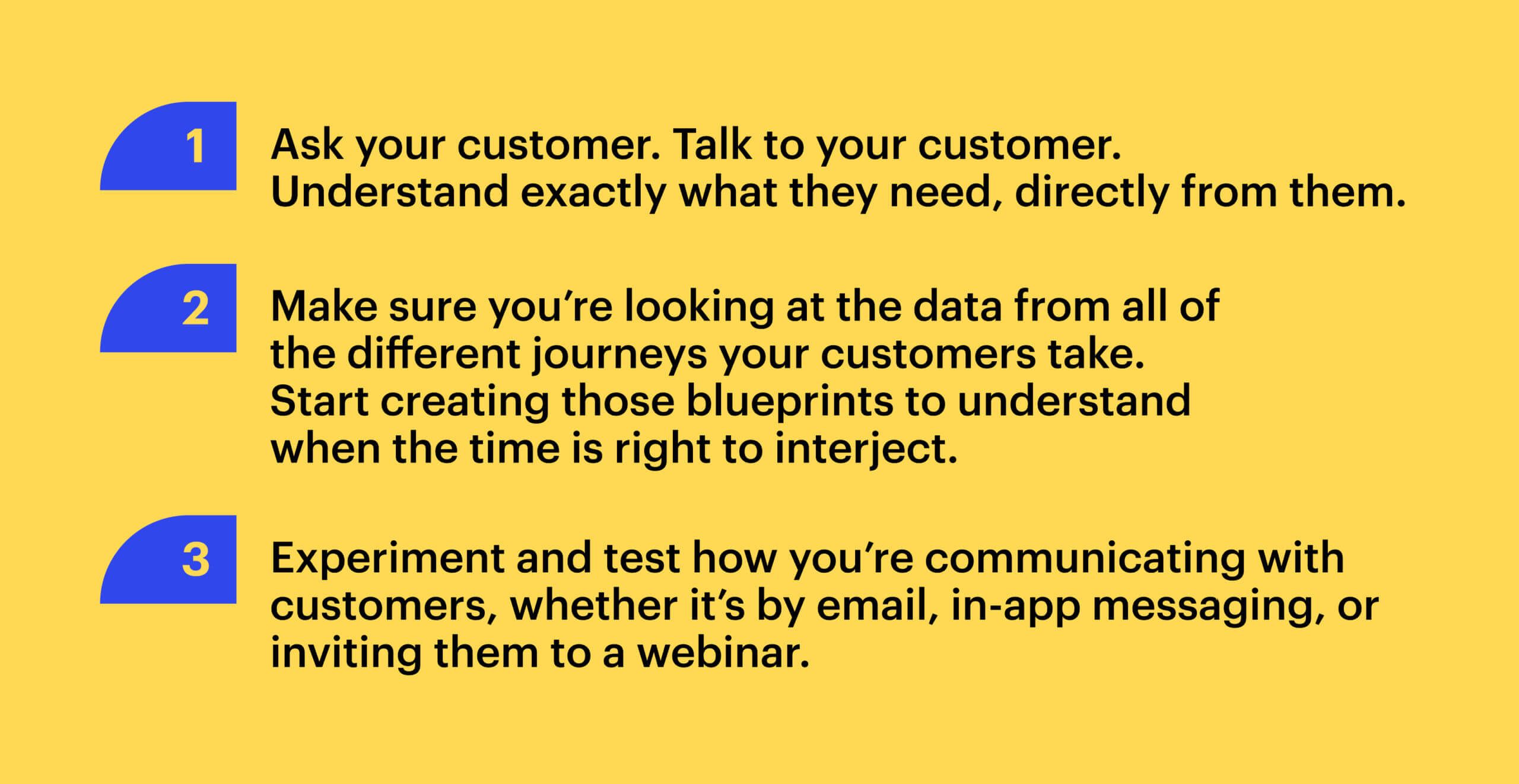
Offering support when and where it’s needed
When mapping out their own proactive support strategy, Christine explains that the team closely analyzed their customers’ journeys to identify where they could inject support motions in an organic, unobtrusive way. By setting up a flagging system, they were able to locate points within the product where customers were at risk of running into roadblocks or where they could use a bit of extra help. “We use what we call ‘human-assisted machine learning’ to spot certain symptoms of customers who are going to be super successful and see value for a long time, or that maybe aren’t seeing the value or aren’t optimized in how they set up their Typeform to achieve the results they need,” Christine says.
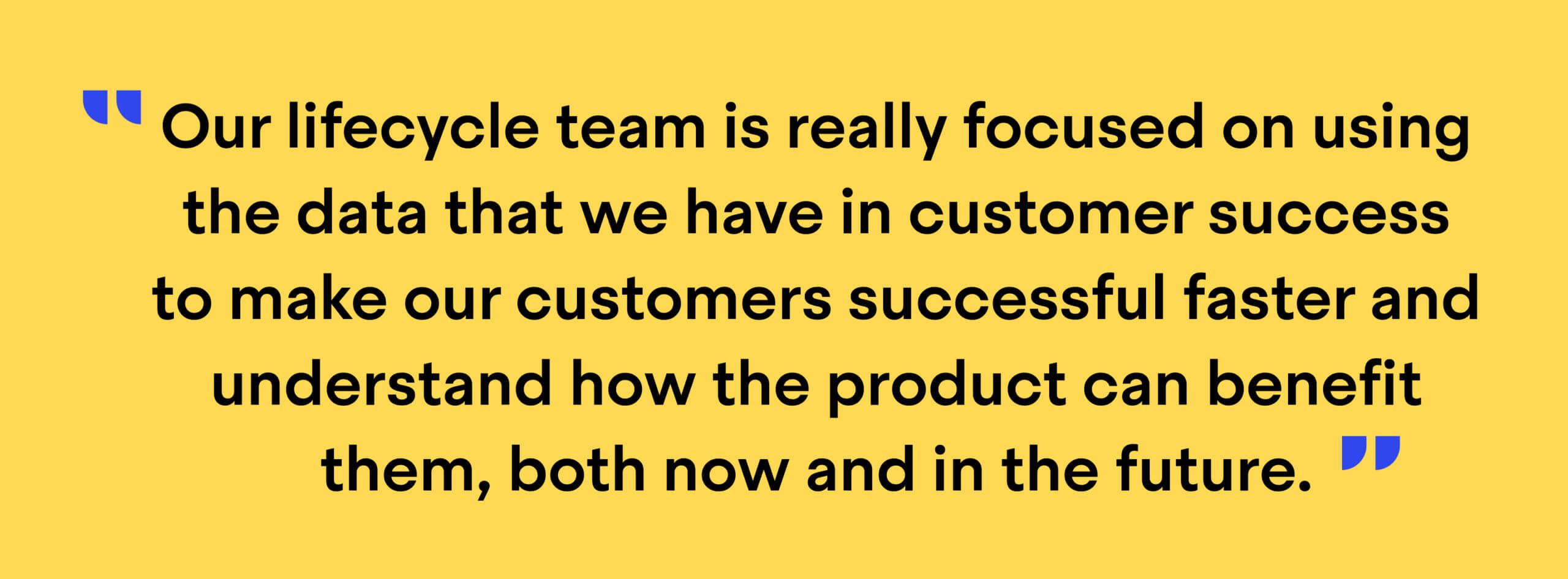
The proactive support arm of the customer success organization in Typeform consists of two teams: the lifecycle team, responsible for retention and expansion, and the customer outcomes team, who focus on building strong, personal relationships with Typeform’s enterprise customers. While lifecycle teams traditionally sit within marketing, Christine speaks to the value of housing them within the success organization, saying, “Our lifecycle team is really focused on using the data that we have in customer success to make our customers successful faster and understand how the product can benefit them, both now and in the future.”
Enabling customers to self-serve
Understanding that not all customers need human-assisted support, Christine highlights the importance of building custom journeys for customers to self-serve. At Typeform, self-service support takes a couple of different forms, from their help center to the Typeform community forum. According to Christine, building their online community forum alongside their customers has been, and continues to be, a great learning experience for teams across the company. “Our product team can do deep dives with customers in the community to get their feedback and input – it’s influencing how they’re thinking about the roadmap in real time,” she says.
“I think communities really act as that bridge for you to interact directly with your peers, to grow professionally, and get inspiration more organically”
The Typeform team has also noticed their customers forging relationships with their peers, sharing knowledge, and helping one another to optimize their use of the product. “I think communities really act as that bridge for you to interact directly with peers of yours, to grow professionally, and get inspiration more organically,” Christine says.
The measure of success
Within the customer success organization, Christine explains that understanding whether their customers are achieving their business goals is of the utmost importance when measuring their own success. “Ultimately, what we need to know is: did we solve their business problem, and did we help them to achieve their goals? Because that’s what makes it meaningful,” she says.
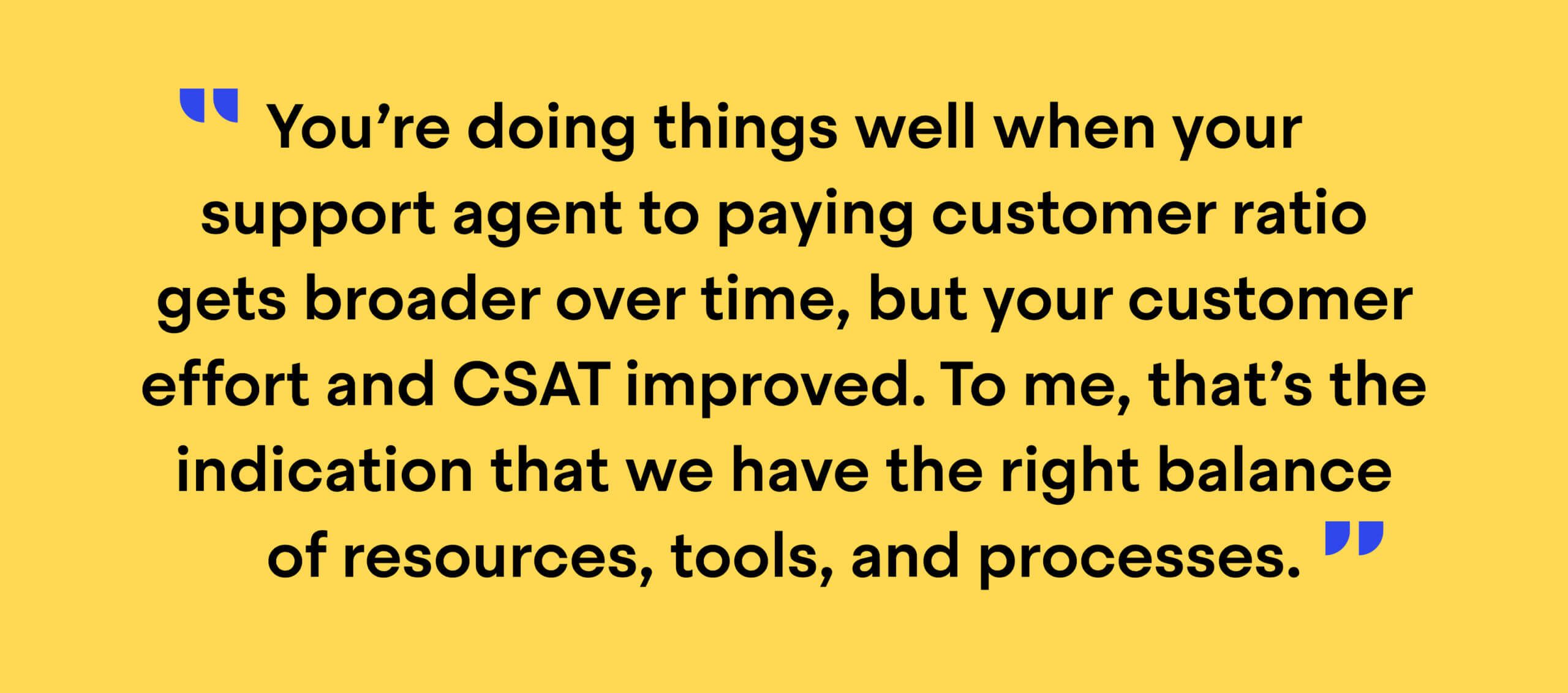
Outside of measuring industry-standard metrics like customer effort and satisfaction scores, the team also looks at metrics closer to retention, such as weekly active customers, to better understand how successfully their customers are using the product. Using all of this data to tell an overarching story, Christine says, “You’re doing things well when your support agent to paying customer ratio gets broader over time, but your customer effort and CSAT improved. To me, that’s the indication that we have the right balance of resources, tools, and processes.”
Lessons learned from creating blueprints for customer success
Across all of the teams and pillars that underpin customer success at Typeform, Christine emphasizes the importance of communication. With unique learnings and insights being gathered at each stage of the customer journey, it’s crucial to ensure they’re being absorbed and applied across the entire organization. As Christine puts it, “It’s so important to cycle information and close the loop between all three pillars of your support.”
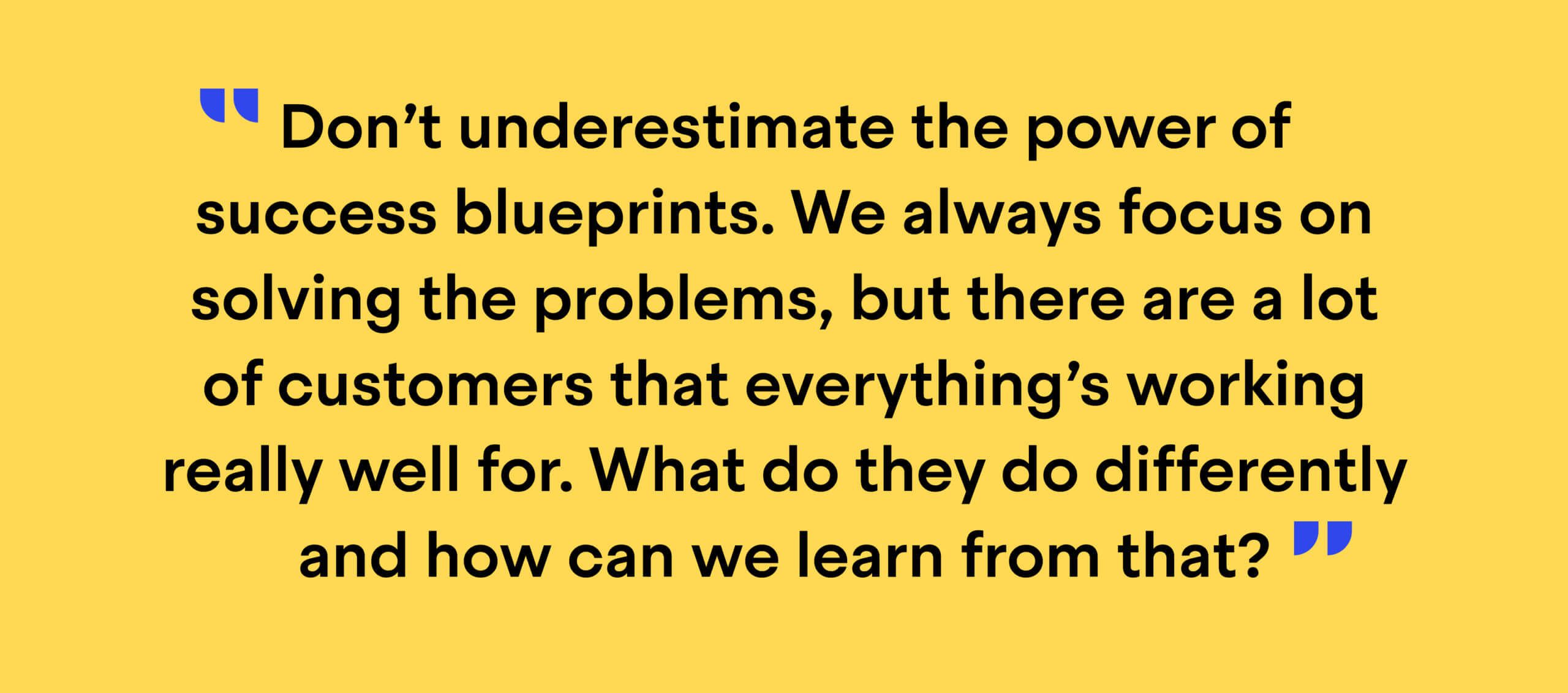
Reflecting on the learnings gleaned from building customer experiences, Christine’s advice for other support leaders is, “Don’t underestimate the power of success blueprints. We always focus on solving the problems, but there are a lot of customers that everything’s working really well for. What do they do differently and how can we learn from that?”







